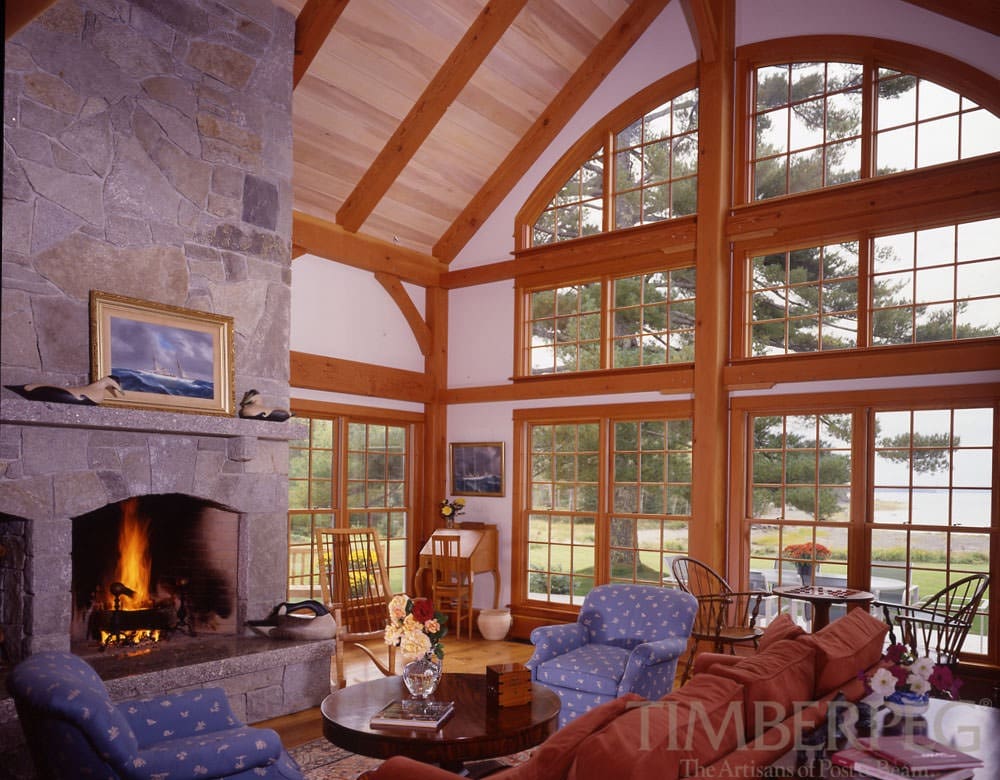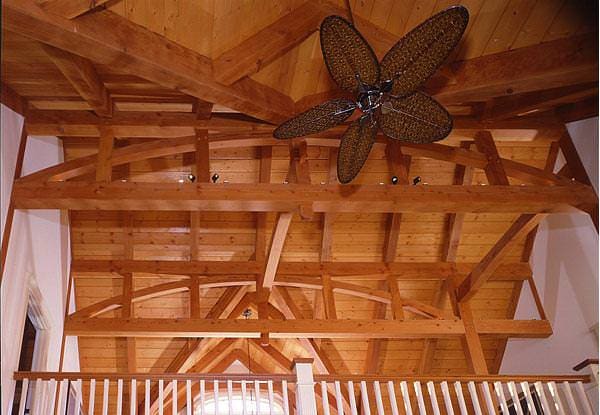
When designing a conventional home, the ceiling is not often given much consideration. Perhaps we disregard the ceiling since it is seldom the focus of our attention in a room, but the design of a ceiling can greatly influence how a room feels, and this is especially true in a timber framed home. While a wood board ceiling may seem quite at home in a timber framed home, plaster or drywall ceilings in some rooms can help a space feel cozier. Here are some tips for how to design ceilings to work best with your home.
Wood Ceilings
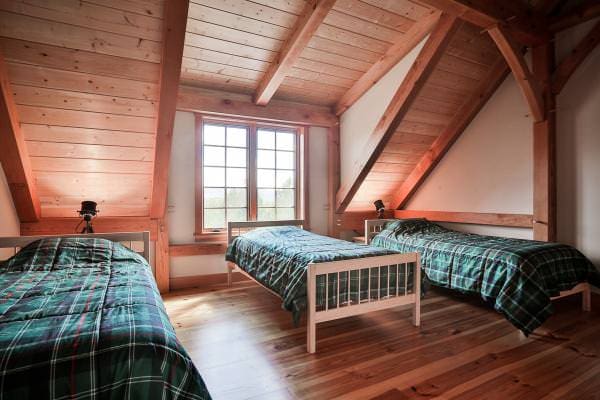
A ceiling of wooden boards is a very popular choice, but it does tend to make a space feel more enclosed than a plaster or drywall ceiling. This property makes it an excellent choice for a cathedral-ceilinged great room, since it allows for a grand entertaining space with large banks of windows without making the space feel too cavernous. If you are looking to make a great room feel grand yet intimate, then a wood ceiling is an excellent choice.
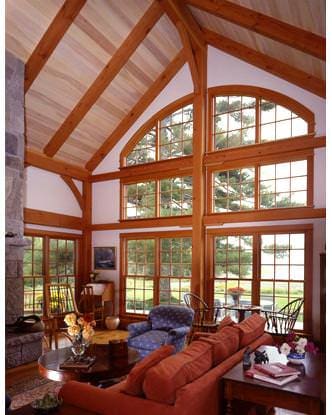
The type of boards you choose for your ceiling will also affect how the room feels. Ceiling boards can be purchased in widths from four to ten inches, with a larger width board evoking a more rustic aesthetic while a narrower board may remind one of a spa or yacht. The pattern on the edge of the board can also significantly change a room’s visual appeal. Boards with square edges will tend to blend into one another, whereas V-edged boards will stand out from their neighbors. A board with a beveled edge will fall somewhere in between.
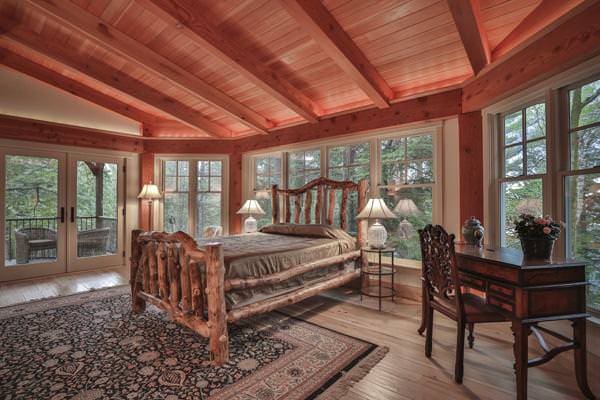
Although most customers choose to leave ceiling wood unfinished, the choice of wood species can also be an important one. If the ceiling wood is the same species as the post and beams, then the ceiling and structural members will tend to blend into one another visually. If, like most clients, you use Douglas fir post and beams and want them to stand out from the ceiling, then a lighter white pine ceiling is a often a nice contrast.
Plaster and Drywall Ceilings

If you are designing a more intimate space, like a bedroom, then a plaster or drywall ceiling can help maintain a cozy feeling. Plaster has a texture to it that many find appealing but is much more expensive to have installed than drywall. If you are considering painting your ceiling, then consider how the color of the ceiling will affect the room. The standard advice is that a low ceiling (less than nine feet) should be painted a few shades lighter than the wall color while a high ceiling should be painted a few shades darker. This will help visually lower the ceiling in a high room and make it more intimate and keep a normal height room from feeling cramped. A darker ceiling will reflect less light, so you will need to consider this when planning how you will illuminate the room.
Hybrid Ceilings

If you want a cozier room while maintaining a timber framed charm, then you can use a ceiling with elements of wood and plaster or drywall. Keeping the beams exposed in a plaster ceiling is one popular option. You can also have sections of plaster and sections of wood ceiling, perhaps by using a tray or coffered ceiling.
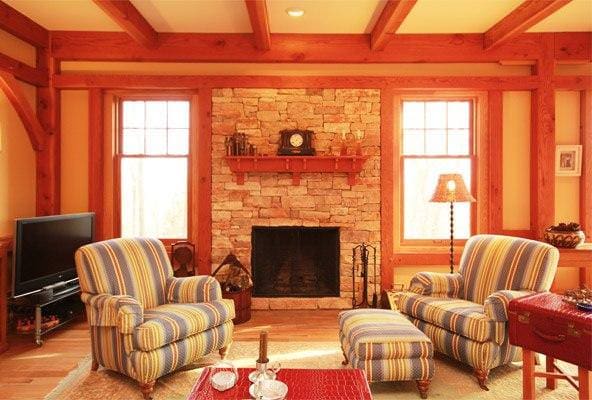 This timber frame home strikes a beautiful balance between the dark tones of the wooden beams, the cool and jagged texture of a stone fireplace, and the soft and light look of plaster. We’d love to sit right down in this room and take it all in.
This timber frame home strikes a beautiful balance between the dark tones of the wooden beams, the cool and jagged texture of a stone fireplace, and the soft and light look of plaster. We’d love to sit right down in this room and take it all in.If you would like to learn more about the various options for ceiling finishes, please contact Timberpeg today to learn more. Our talented design team is able to help with material choices, as well as crafting an entire timber frame home plan to your liking.

